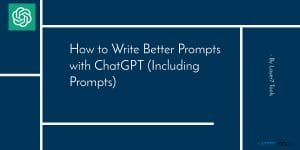Writing Good Headlines That Make a Difference: A Comprehensive Guide
Don’t let your awesome content and message get lost in the shuffle – learn how to write good headlines that will captivate and convince your readers to take the next step. A good headline should be concise, attention-grabbing, and relevant to your target audience. Crafting the perfect headline takes practice and skill, but with a few simple steps, you can start mastering the art of writing effective headlines that drive conversions. Follow this comprehensive guide to get started.
Understanding What Makes a Good Headline
Writing good headlines can be the key to captivating your audience and driving conversions. From press releases to landing pages, understanding what makes a headline effective is essential for compelling readers and inspiring action.
Effective headlines should be clear, concise, specific, and relevant. Think about the customer’s “problem window” – what their primary goal or need is. The headline should speak directly to that problem or desire and guarantee a solution by exploring the topic in greater detail within the article or page.
Oftentimes incorporating numbers, lists, topics, names, and questions into your headlines can help make them even more succinct yet catchy at the same time.
Clarity is essential for getting the point across quickly and efficiently. It’s like having good directions to a destination; you need to know exactly where you’re going. Your headline should be detailed enough so that readers can immediately understand what it’s about without having to “translate” its meaning.
Brevity is also important; everything you include in the headline should be relevant and contribute to its overall message. It’s like having an elevator pitch; each word has a purpose and carries weight. You want your headline to express as much information as possible while still being concise and easy to read.
Specificity allows readers to get an immediate idea of what they can expect from your article or product before they even click on it. It’s like having multiple signposts along a path; each one provides more information about where you’re going. Your headline should give enough details regarding the main hook or theme of the content so that readers know what they will find if they open it up or buy it.
And finally, relevance is crucial for ensuring that your content will actually be seen by those who are likely to benefit from it. It’s like taking out a specific kind of advertisement; you want people who actually have the problem your product solves or who are interested in learning more about this topic to see it. Your headlines should use words that are related directly to the main topic of your article/product so that search engines can easily match them up with relevant searches from potential customers.
Writing Techniques for Crafting Great Headlines
Headlines have a unique power to grab attention and, when done right, convert readers into buyers. Writing compelling headlines involves more than just slapping together some words; it requires technique, creativity, and an understanding of what appeals to your target audience. Here are some techniques that you can use to craft great headlines!
First and foremost, aim to make your headline conversational. It should be something that people would actually say in conversation. This will help engage the reader by making them feel as if there’s a real person behind the words. Additionally, writing headlines that come across as relatable will lead to higher engagement levels. Avoid jargon or complicated terms; instead, make your headline easy to understand and relatable for your audience.
Another important tip for writing effective headlines is to include actionable language. Phrases such as “discover,” “learn,” or “download now” can entice readers to take action upon reading your headline. Additionally, inject some emotion into it – humor, curiosity, or shock value – depending on the type of appeal you’re going for with your particular topic.
Finally, consider incorporating numbers into your headline when appropriate. People are drawn towards quantifiable information, so including figures such as percentages or timescales can help bring immediacy and attract further clicks.
Examples of appealing actionable headlines:
- include tip lists (e.g., “7 Ways To Boost SEO Performance”),
- look-backs (e.g., “5 Lessons From 2020 We Can All Learn From)
- Comparisons (e.g., “A Guide To The Top 5 Video Conferencing Tools Of 2021’”).
Boosting Your Headline with Subheadings
Subheadings are a great way to break up long headlines, making them easier to read and understand. They also help to reinforce your message and make the headline more memorable. Subheadings can be used in a variety of ways: some are descriptive and give readers an overview of the content, while others add persuasive language in order to grab attention and drive conversions.
When used effectively, subheadings can take a basic headline from bland to compelling. A few examples include the following:
– Reinforce Message & Drive Conversions: Make Your Headline Stand Out
– Get Noticed & Convert Sales: Write Killer Headlines That Catch On
– Create A Winning Heading Strategy: Enhance Your Headline Writing
Using descriptive subheadings provides readers with an instant overview of what they’ll read within the article or post they’ve clicked on. Persuasive language such as “transform,” “boost,” or “revolutionize” can also work well if used judiciously – but too much persuasion may cause distrust among your readers. When crafting effective subheadings, it’s important to choose words that reflect your brand image and messaging so that you avoid any potential misinterpretations.
Analyzing How Effective Your Headline Is
Analyzing how effective your headline is can be the key to driving conversions and achieving success. Luckily, there are several ways you can test whether your headline is successful.
One of the most popular options is A/B testing, which allows you to show different versions of the same page to two separate groups of users and track which version produces better results.
A second option is the Google AdWords experiment tool, which allows you to create a control group version of your ad with a headline and an alternative version with a different headline, resulting in data that lets you compare which version produces better results.
Finally, heat maps allow you to analyze user behavior by tracking where people click on an advertisement or website.
By analyzing the results from these tests and experiments, you’ll be able to discover opportunities for improvement in terms of improving efficacy and refining your message. For example, if it turns out that one certain type of headline resonates more with your target audience, then that could give you valuable information on how to write headlines that grab attention and drive conversions more effectively going forward. You may even find yourself uncovering trends within your data – such as specific words or phrases that carry more weight than others – enabling you to craft headlines that, in turn, help increase engagement among readers.
How AI Writers can help
AI writers are a great asset for content creators looking to ensure that their headlines don’t just grab attention but also drive conversions. AI writers like Copy.ai, Rytr, and Contentbot have inbuilt templates for creating effective headlines for posts across different platforms such as Facebook, Google Ads, and Blog Titles. These digital writers are quick and efficient, not to mention cost-effective too, with the help of which you can generate hundreds of headline variations faster than humanly possible!
My favorite of the bunch is Copy.ai because it has the capability to understand and write in a more humanistic and relatable tone that resonates better with users and hence dramatically improves engagement rates. As an advertiser on various platforms – if you want to increase visibility and expertise – heading in the direction of leveraging AI writers is certainly worth it! In fact, most major advertisers these days are doing exactly that! The advantages are quite obvious, so why miss out?
With this said, make sure you pick a reliable AI writer, those who provide clear guidelines on how to use their tools while helping you stay ahead of the curve.
Conclusion
Writing successful headlines is an art that requires practice and skill. To ensure your titles can capture the attention of your target audience and drive conversions, it’s important to understand the needs and motivations of the people you are trying to reach. Crafting a headline with customer-focused messages will help you create a compelling call to action that draws people in. It’s also important to test different versions of headlines through A/B testing or other data-driven approaches to understand what resonates best with your audience. Finally, AI writers can be used to create personalized titles that are more accurate and relevant for your target audience. By following these steps, you’ll be able to create powerful headlines that grab attention and result in higher engagement and conversions.
- WPVivid Backup Plugin Review (2023): Backup, Restore, Stage, and Migrate WordPress Sites - March 1, 2023
- How to Write Better Outlines with ChatGPT (Including Prompts) - February 3, 2023
- How to Write good headlines that grab attention and drive conversions - January 27, 2023




